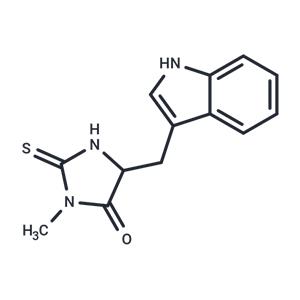
Necrostatin-1 NEW
| Price | $30 | $30 | $45 | $45 | $75 | $75 |
| Package | 5mg | 5mg | 10mg | 10mg | 25mg | 25mg |
| Min. Order: | |
| Supply Ability: | 10g |
| Update Time: | 2024-11-19 |
Product Details
| Product Name: Necrostatin-1 | CAS No.: 4311-88-0 |
| Purity: 99.81% | Supply Ability: 10g |
| Release date: 2024/11/19 |
Product Introduction
Bioactivity
| Name | Necrostatin-1 |
| Description | Necrostatin-1 (Nec-1) is a specific RIP1 inhibitor and necrotic apoptosis inhibitor, which inhibits TNF-α-induced necrotic apoptosis and also inhibits IDO. |
| Cell Research | Determination of EC50 was performed in FADD-deficient Jurkat cells treated with human TNFα as previously described. Briefly, cells were seeded into 96-well plates and treated with a range of necrostatin concentrations (30 nM to 100 μM, 11 dose points) in the presence and absence of 10 ng ml–1 human TNFα for 24 h. For these and all other cellular assays, compound stocks (in DMSO) were diluted to appropriate concentrations in DMSO before addition to the cells to maintain final concentration of DMSO for all samples at 0.5%. Cell viability was determined using CellTiter-Glo luminescent cell viability assay. Ratio of luminescence in compound and TNF-treated wells to compound-treated, TNF-untreated wells was calculated (viability, %) [1]. |
| Kinase Assay | The assay was performed essentially as described. 293T cells were transfected with pcDNA3-FLAG-RIP1 vector, vectors encoding RIP1 mutant proteins or pcDNA3-RIP2-Myc and pcDNA3-FLAG-RIP3 vectors using standard Ca3(PO4)2 precipitation procedure. Culture medium was replaced 6 h after the transfection and cells were lysed 48 h later in the TL buffer consisting of 1% Triton X-100, 150 mM NaCI, 20 mM HEPES, pH 7.3, 5 mM EDTA, 5 mM NaF, 0.2 mM NaVO3 and complete protease inhibitor cocktail. Immunoprecipitation was carried out for 16 h at 4 °C using anti-FLAG M2 agarose beads, followed by three washes with TL buffer and two washes with 20 mM HEPES, pH 7.3. Beads were incubated in 15 μl of the reaction buffer containing 20 mM HEPES, pH 7.3, 10 mM MnCl2 and 10 mM MgCl2 for 15 min at 23–25 °C in the presence of different concentrations of necrostatins. For these assays, compound stocks (in DMSO) were diluted to appropriate concentrations in DMSO before the addition to the reactions to maintain final concentration of DMSO for all samples at 3%. Kinase reaction was initiated by addition of 10 μM cold ATP and 1 mCi of [γ-32P] ATP, and reactions were carried out for 30 min at 30 °C. Reactions were stopped by boiling in SDS-PAGE sample buffer and subjected to 8% SDS-PAGE. RIP1 band was visualized by analysis in a Storm 8200 Phosphorimager. Similar protocol was used for endogenous RIP1 kinase reactions, except mouse monoclonal RIP1 antibody and protein magnetic beads or rabbit RIP1 antibody-coupled agarose beads were used. For recombinant baculovirally expressed RIP1, protein was expressed in Sf9 cells according to manufacturer's instructions and purified using glutathione-sepharose beads. Protein was eluted in 50 mM Tris-HCl, pH 8.0 supplemented with 10 mM reduced glutathione, and eluted protein was used in the kinase reactions, supplemented with 5 × kinase reaction buffer (100 mM HEPES, pH 7.3, 50 mM MnCl2, 50 mM MgCl2, 50 μM cold ATP and 5 μCi of [γ-32P]ATP) [1]. |
| Animal Research | 24 hours after reperfusion, mice received intravenous application of 200 μl PBS or RCM via the tail vein. A single dose of zVAD (10 mg/kg body weight) or Nec-1 (1.65 mg/kg body weight) was applied intraperitoneally 15 min. before RCM-injection. To test the activity of zVAD, we applied zVAD from the same byculture to anti-Fas-treated Jurkat cells to assure its quality before mice were treated with this compound. Mice were harvested another 24 hours after RCM-application (48 hours after reperfusion). Blood samples were obtained from retroorbital bleeding and serum levels of urea and creatinine 5 were determined according to clinical standards in the central laboratory of the University Hospital Schleswig-Holstein, Campus Kiel, Germany, employing an enzymatic ultraviolettest for urea and an enzymatic peroxidase-dependent test for creatinine according to the manufacturer's instructions. Kidneys were conserved for histology. In addition to the demonstrated experiments, we compared the PBS group to mice that only received IRI without 200 μl of PBS and detected no changes in serum concentrations of urea and creatinine or histologically [3]. |
| In vitro | METHODS: Human hepatocellular carcinoma cells Huh7 and SK-HEP-1 were pretreated with Necrostatin-1 (10-20 μM) for 1 h, and then treated with sulfasalazine, erastin or RSL3 for 24 h. Cell viability was measured by CellTiter Glo? assay. RESULTS: Necrostatin-1 significantly blocked the decrease in cell viability induced by sulfasalazine and erastin in both cell lines and partially reversed the decrease in cell viability induced by RSL3 in SK-HEP-1 cells. [1] METHODS: Human histiocytic lymphoma cells U937 were treated with Necrostatin-1 (1-20 μM), zVAD.fmk (100 μM), and TNFα (10 ng/mL) for 72 h. Cell viability was detected by ATP-based viability assay. RESULTS: Necrostatin-1 effectively blocked the necrotic death of U937 cells in a concentration-dependent manner. [2] METHODS: H/R injury-induced human renal papillomatous cells HK-2 were treated with Necrostatin-1 (30 mmol/L) for 2-12 h. Cell death was analyzed by Flow Cytometry. RESULTS: Necrostatin-1 partially protected HK-2 cells from H/R-induced necrosis. [3] |
| In vivo | METHODS: To study the pathophysiology of contrast-induced AKI (CIAKI), Necrostatin-1 (1.65 mg/kg) was administered intraperitoneally as a single injection to C57BL/6 mice, and CIAKI was induced by using radiocontrast media (RCM) 15 min later. RESULTS: Necrostatin-1 prevented osmotic nephropathy and CIAKI. Necrostatin-1 blocked RCM-induced peritubular capillary dilatation, suggesting that the structural domain of RIP1 kinase has a novel role in regulating the microvascular hemodynamics and pathophysiology of CIAKI that is independent of cell death. [4] METHODS: To investigate the protective effect and mechanism of hepatitis in mice, Necrostatin-1 (1.8 mg/kg) was administered intraperitoneally to C57BL/6 mice as a single injection, and concanavalin A was used to induce hepatitis 1 h later. RESULTS: Improvements in liver function and histopathologic changes, as well as suppression of inflammatory cytokine production, were observed in Necrostatin-1-injected mice. The expression of TNF-α, IFN-γ, IL2, IL6, and RIP1 was significantly reduced in Necrostatin-1-injected mice, and autophagosome formation was significantly reduced by Necrostatin-1 treatment. The RESULTS suggest that Necrostatin-1 prevents concanavalin A-induced liver injury through RIP1-related and autophagy-related pathways. [5] |
| Storage | Powder: -20°C for 3 years | In solvent: -80°C for 1 year | Shipping with blue ice. |
| Solubility Information | DMSO : 55 mg/mL (212.08 mM) 10% DMSO+40% PEG300+5% Tween 80+45% Saline : 4 mg/mL (15.42 mM), Please add co-solvents sequentially, clarifying the solution as much as possible before adding the next one. Dissolve by heating and/or sonication if necessary. Working solution is recommended to be prepared and used immediately. |
| Keywords | Receptor-interacting protein kinases | Inhibitor | Necrostatin-1 | RIP kinase | RIPK | Nec 1 | Ferroptosis | Necrostatin1 | Nec1 | inhibit | Autophagy | Indoleamine 2,3-Dioxygenase (IDO) |
| Inhibitors Related | Stavudine | Xylitol | Sodium 4-phenylbutyrate | Hydroxychloroquine | Guanidine hydrochloride | Taurine | Curcumin | Oxyresveratrol | Paeonol | L-Cystine | Naringin | Gefitinib |
| Related Compound Libraries | Bioactive Compound Library | Antidepressant Compound Library | Cytokine Inhibitor Library | Kinase Inhibitor Library | Anti-Ovarian Cancer Compound Library | Inhibitor Library | NO PAINS Compound Library | Immuno-Oncology Compound Library | Anti-Aging Compound Library | Bioactive Compounds Library Max |
Company Profile Introduction
Target Molecule Corp. (TargetMol) is a global high-tech enterprise, headquartered in Boston, MA, specializing in chemical and biological research product and service to meet the research needs of global customers.
TargetMol has evolved into one of the biggest global compound library and small molecule suppliers and a customer based on 40+ countries. TargetMol offers over 80 types of compound libraries and a wide range of high-quality research chemicals including inhibitors, activator, natural compounds, peptides, inhibitory antibodies, and novel life-science kits, for laboratory and scientific use. Besides, virtual screening service is also available for customers who would like to conduct the computer-aided drug discovery.
You may like
Recommended supplier
| Product name | Price | Suppliers | Update time | |
|---|---|---|---|---|
| $78.00/2mg |
VIP3Y
|
TargetMol Chemicals Inc.
|
2024-10-28 | |
| $1.00/1g |
VIP1Y
|
Apeloa production Co.,Limited
|
2024-06-05 | |
| $5.00/5KG |
VIP7Y
|
Career Henan Chemical Co
|
2019-09-03 |
- Since: 2011-01-07
- Address: 36?Washington?Street, Wellesley?Hills
INQUIRY



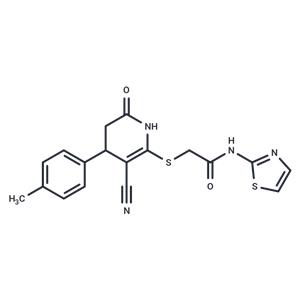
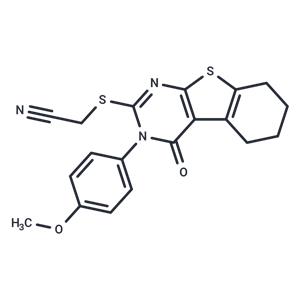
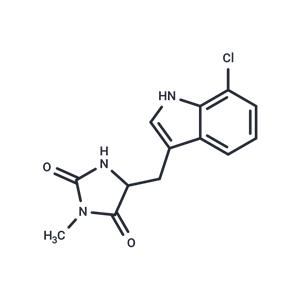
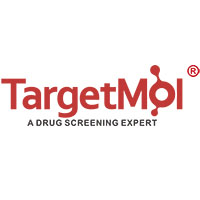
 United States
United States